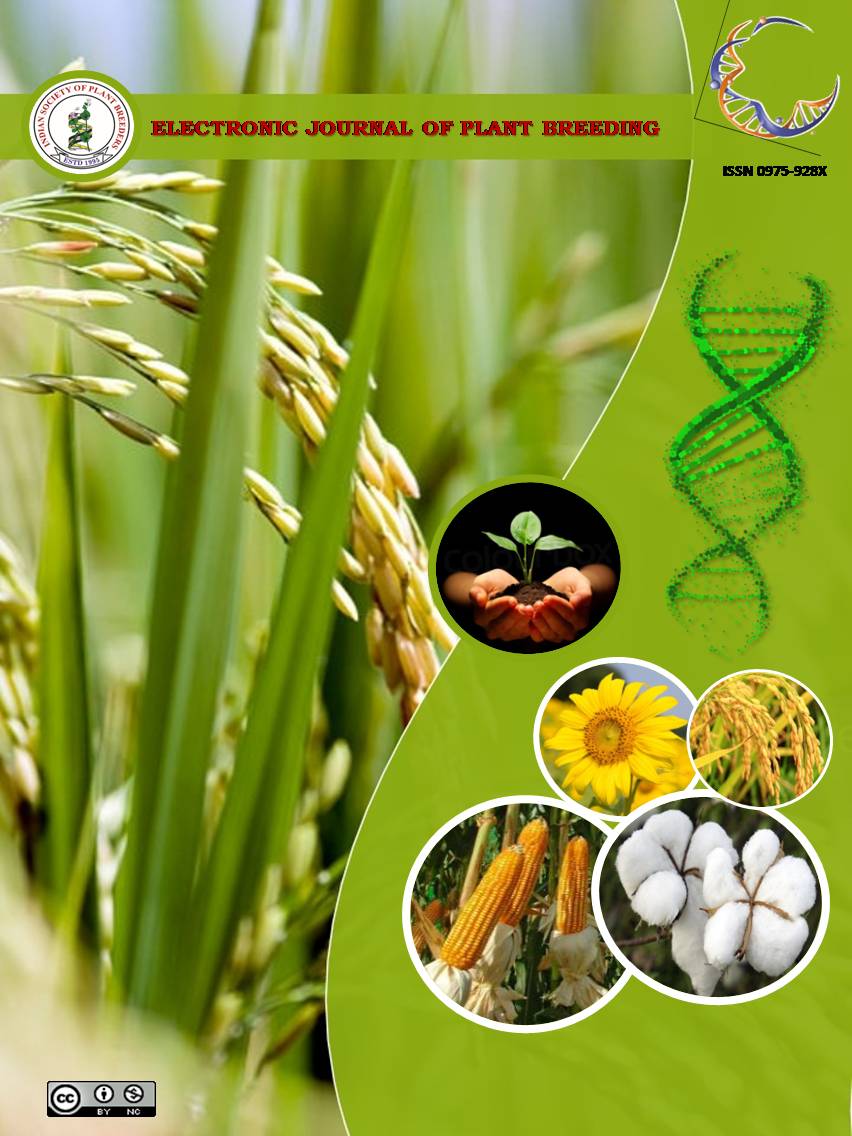Studies on genetic diversity in rice TGMS lines
Abstract
One hundred and nineteen rice temperature sensitive genetic male sterile lines (TGMS) were used to study the magnitude of genetic diversity for ten yield traits using Mahalanobis D2 analysis. Based on Torcher’s cluster analysis, the 119 genotypes were grouped into nine clusters. Cluster I was maximum with 85 genotypes followed by cluster II with 15 genotypes and cluster III with 11 genotypes,. The clusters namely IV, VI, VII, VIII, and IX were solitary clusters with one genotype each. The maximum inter cluster distance was observed with clusters V and IX followed by cluster V and VIII which indicates the genotypes present in these cluster having more divergence. The highest intra cluster distance was observed in cluster III (22.08). Among the traits, number of grains per panicle (49.76 %) followed by number of productive tillers (23.43%), spikelet fertility (14.46%) and pollen fertility (9.93%) exhibited maximum contribution towards total divergence among the genotypes studied. Hence, these characters could be given importance for selection of genotypes for further crop improvement program.

It is certified that:
- The corresponding author is fully responsible for any disputes arising due to the publication of his/her manuscript.
- The article has been seen by all the authors who are satisfied with its form and content.
- The sequence of names of authors in the by-line is as per their relative contribution to this experiment, giving due credit to all scientists who made notable contribution to it.
- All the authors fully understand that inclusion of any other co-authors or exclusion of any co-authors is not possible once the article has been submitted to the journal.
- The corresponding author takes full responsibility for this article.
- The address of the organization where the research was conducted is given.
- The article is exclusive for this journal, and the results reported here have not been sent (and will not be sent during its consideration by this journal) for publication in any other journal.
- Authors agree to abide by the objective comments of referees and do agree to modify the article into a short note as per the recommendation, for publication in the Electronic Journal of Plant Breeding.
- If published in Electronic Journal of Plant Breeding, the copyright of this article would vest with the Indian Society of Plant Breeders, who will have the right to enter into any agreement with any organization in India or abroad engaged in reprography, photocopying, storage and dissemination of information contained in it, and neither we nor our legal heirs will have any claims on royalty.


